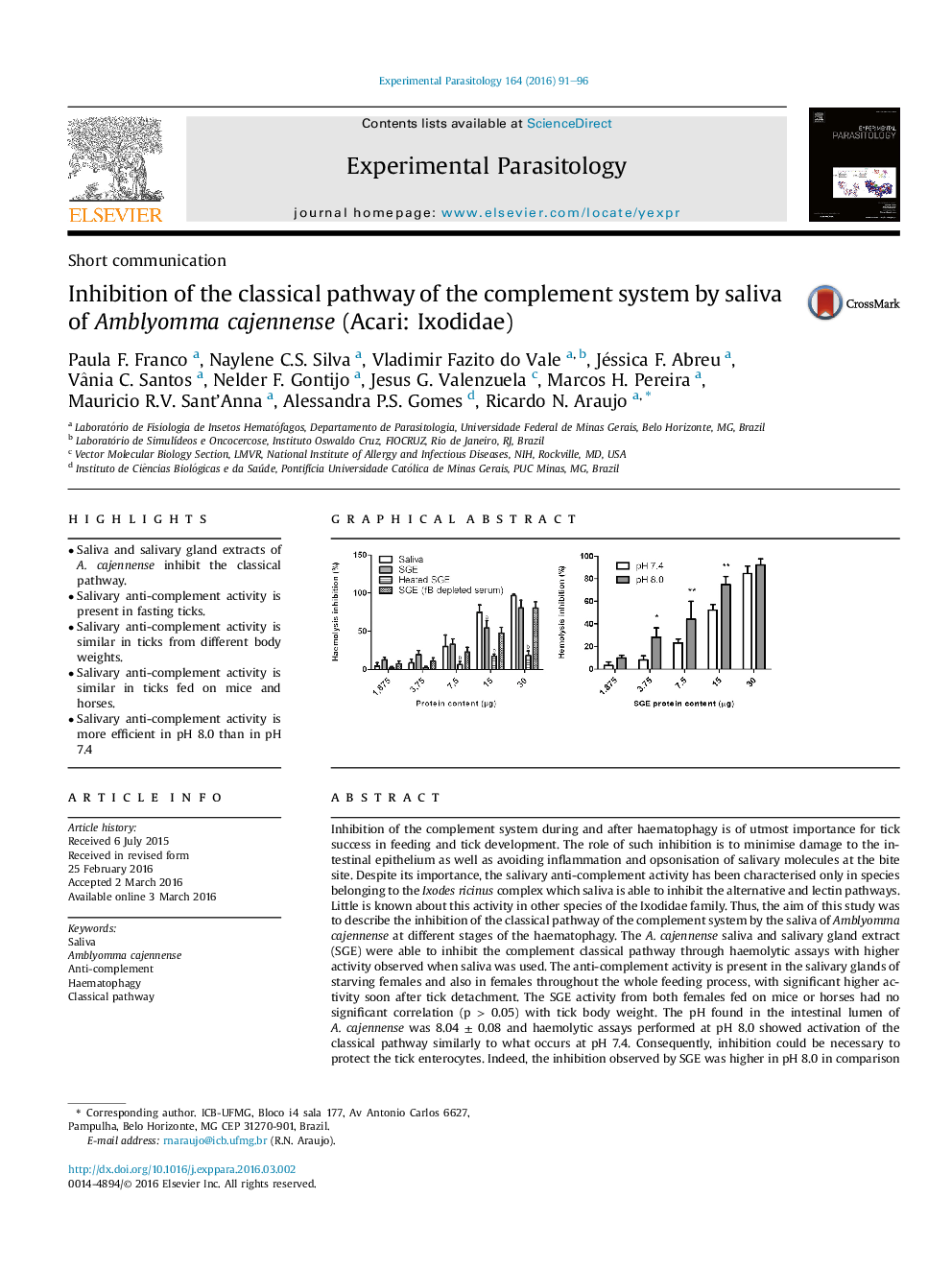| Article ID | Journal | Published Year | Pages | File Type |
|---|---|---|---|---|
| 4370944 | Experimental Parasitology | 2016 | 6 Pages |
•Saliva and salivary gland extracts of A. cajennense inhibit the classical pathway.•Salivary anti-complement activity is present in fasting ticks.•Salivary anti-complement activity is similar in ticks from different body weights.•Salivary anti-complement activity is similar in ticks fed on mice and horses.•Salivary anti-complement activity is more efficient in pH 8.0 than in pH 7.4
Inhibition of the complement system during and after haematophagy is of utmost importance for tick success in feeding and tick development. The role of such inhibition is to minimise damage to the intestinal epithelium as well as avoiding inflammation and opsonisation of salivary molecules at the bite site. Despite its importance, the salivary anti-complement activity has been characterised only in species belonging to the Ixodes ricinus complex which saliva is able to inhibit the alternative and lectin pathways. Little is known about this activity in other species of the Ixodidae family. Thus, the aim of this study was to describe the inhibition of the classical pathway of the complement system by the saliva of Amblyomma cajennense at different stages of the haematophagy. The A. cajennense saliva and salivary gland extract (SGE) were able to inhibit the complement classical pathway through haemolytic assays with higher activity observed when saliva was used. The anti-complement activity is present in the salivary glands of starving females and also in females throughout the whole feeding process, with significant higher activity soon after tick detachment. The SGE activity from both females fed on mice or horses had no significant correlation (p > 0.05) with tick body weight. The pH found in the intestinal lumen of A. cajennense was 8.04 ± 0.08 and haemolytic assays performed at pH 8.0 showed activation of the classical pathway similarly to what occurs at pH 7.4. Consequently, inhibition could be necessary to protect the tick enterocytes. Indeed, the inhibition observed by SGE was higher in pH 8.0 in comparison to pH 7.4 reinforcing the role of saliva in protecting the intestinal cells. Further studies should be carried out in order to identify the inhibitor molecule and characterise its inhibition mechanism.
Graphical abstractInhibition of the classical pathway of the complement system by saliva and salivary gland extract (SGE) of Amblyomma cajennense at the host skin and tick midgut pHs.Figure optionsDownload full-size imageDownload as PowerPoint slide
